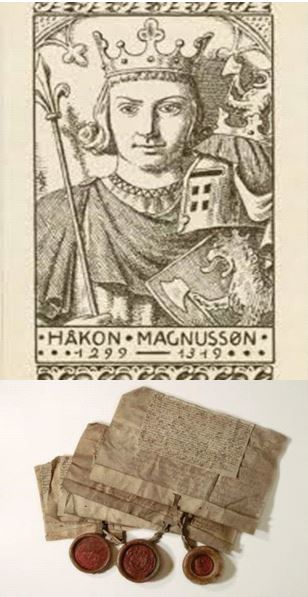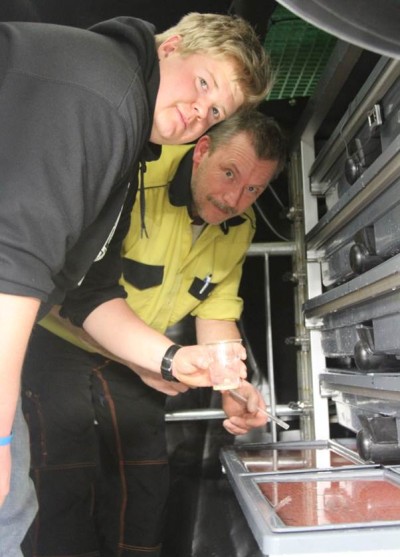Heritage
In Norway, hydropower is often referred to as “family silver” — and the story of Sarpsfossen hydropower is a perfect embodiment of the phrase.
Ever since the Viking era, when King Olav II Haraldsson founded his new capital Borg (today Sarpsborg) in 1016 next to the waterfall, it has been tightly intertwined with Norwegian economic history. On January 13th 1312, King Håkon Magnusson gave the royal residence of Borregaard to Hafthor Jonsson and as a result the Borregaard estate was established.
The gift included the farm and the property rights to the Sarpsfossen waterfall in the river. In the gift letter (pictured on the left), which is still preserved in Norway’s National Archive today, the King stated that the river and the waterfall should be utilized to their full potential. This statement proves that even at that time, people already understood the potential of water energy as an invaluable source of power.
This piece of history was almost lost when a landslide in 1702 triggered a flood that raged into the Borregaard. The only thing the owner at the time managed to salvage from the building was an iron studded trunk. It contained some silver and some important documents like the letter from the King Haakon V Magnusson from 1312. This trunk with its contents is in exhibit today at Borgarsyssel museum in Sarpsborg. The documents and the gift letter are stored at Norway’s national archive.

Electricity was first produced from Sarpsfossen in 1892 for a pulp mill which had been built by the waterfall.
Sarpsfossen 2015
Preserving biodiversity
Over several years, the power plant owners of Sarpsfossen have contributed to the efforts for preserving and thriving the biodiversity in the lower Glomma river area. In the Ågaardsriver located in upstream Sarpsfossen, the power plant owners contribute to preserving the population of special Ågaardsriver salmon.
In 2011, power plant owners of Sarpsfossen donated a total of 6 million NOK (approx. $765000) to establish salmon hatcheries to boost the population of Glomma Salmon.In October 2012, state-of-the-art hatcheries were open just below Sarpsfossen, for a total investment of 9 million NOK. The Lower Glomma and the District Fish Management operate the facility together.
In addition to providing financial and operational support, the power plant owners also assist in releasing the salmon into the Sarpsfossen waterfall.


